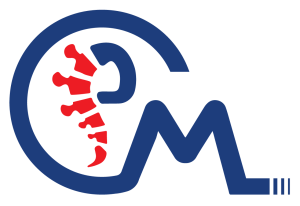Almost every family in Dhaka city is attacked by chikungunya recently. It is most commonly caused by the bites of infected female mosquitoes of the species Aedes aegypti and Aedes albopictus.
Sign and symptoms:
The most common signs or symptoms of chikungunya are acute onset of fever and joint pain which is typically bilateral and symmetric. Typically the joints involved are small joints of the hand, wrist and ankles and larger joints of the knee and shoulder. Some other symptoms are headache, nausea or vomiting, muscle pain or rash. This presentation usually begins 3-7 days after an infectious mosquito bites the individual. Within 7-10 days these acute symptoms should be resolved. The majority of the patient’s joint pain will resolve fairly quickly within 1-3 weeks.
Treatment:
There is currently no medication or vaccine to treat chikungunya — the current best treatment is prevention. Once an individual is infected, they can seek pain management through the means of nonsteroidal anti-inflammatory drugs, fluid replacement and rest. Please consult with your doctor before taking any medication.
Physiotherapy:
Studies have shown that physiotherapy can effectively help to manage the pain and discomfort that affects a patient suffering from the fever. Physiotherapist will first assess the overall condition of the patient and understand the levels of pain and discomfort. It may include pain-relieving modalities as well as exercise. Your physiotherapist will be able to suggest the right exercises for your joint pain.
Homecare:
Rest: The World Health Organisation recommends that you start home care treatment by resting. This will provide relief and time for your body to recover. Rest in an environment that is not damp or too hot, which could aggravate your joint symptoms.
Cold pack: Apply a cold pack to reduce pain and inflammation. You can use an ice pack. Wrap the frozen pack in a towel and apply it to painful areas. Avoid applying a frozen pack or ice directly to your skin, which could cause tissue damage.
Exercise: Always consult with physiotherapist before any exercise. Try to exercise in the morning, when your joints may be the stiffest. Try some of these simple movements:
♦ Sit on a chair. Extend one leg parallel to the floor and hold for 10 seconds before lowering your leg with the sole flat on the floor. Do the same with the other leg. Repeat this several times a day, doing two to three sets of 10 repetitions per leg.
♦ Turn to your side. Raise one leg upwards for a second before bringing it down atop your other leg. Do this 10 times for that leg. Then, turn to the other side, and repeat. Do a set of 10 raises for each leg several times a day.
Use oils or creams: You may experience scaling, dryness or an itchy rash. These do not need treatment, but you can treat the itching and rebuild your skin’s natural conditions and moisture. Apply mineral oils, moisturising creams or calamine lotion.
Paying attention to complications:
Watch for heart rhythms, eye complications and neurological complications like severe headache, neck stiffness/pain, and sensitivity to light, fever, seizures, double vision, nausea and vomiting. See your doctor right away if you notice any complication.
The writer is a neurodynamic specialist and clinical physiotherapist by
Zahid Bin Sultan
Consultant Physiotherapist
Center for Physiotherapy & Mobility
Email: ranacrpphysio@gmail.com
